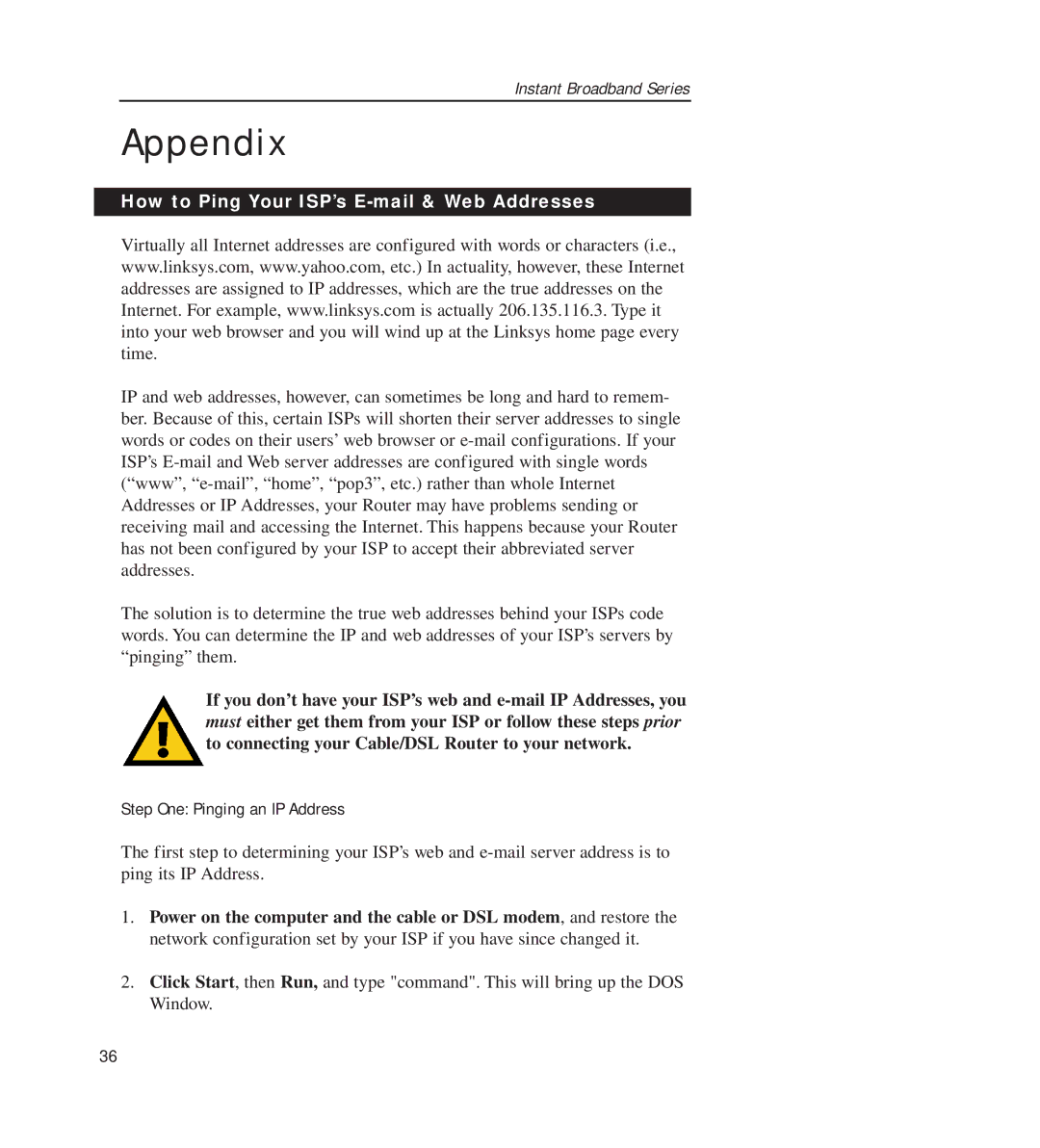
Instant Broadband Series
Appendix
How to Ping Your ISP’s E-mail & Web Addresses
Virtually all Internet addresses are configured with words or characters (i.e., www.linksys.com, www.yahoo.com, etc.) In actuality, however, these Internet addresses are assigned to IP addresses, which are the true addresses on the Internet. For example, www.linksys.com is actually 206.135.116.3. Type it into your web browser and you will wind up at the Linksys home page every time.
IP and web addresses, however, can sometimes be long and hard to remem- ber. Because of this, certain ISPs will shorten their server addresses to single words or codes on their users’ web browser or
The solution is to determine the true web addresses behind your ISPs code words. You can determine the IP and web addresses of your ISP’s servers by “pinging” them.
If you don’t have your ISP’s web and
Step One: Pinging an IP Address
The first step to determining your ISP’s web and
1.Power on the computer and the cable or DSL modem, and restore the network configuration set by your ISP if you have since changed it.
2.Click Start, then Run, and type "command". This will bring up the DOS Window.
36
